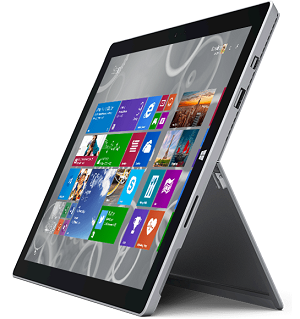iPad Pro vs Surface Pro 3: Comparing two professional-level tablets
Microsoft has long dominated the power tablet arena with its Surface Pro lineup. Its current iteration, the Surface Pro 3, is a staple for positive reviews and worldwide recognition. Meanwhile, Cupertino-based Apple hopes to garner a share of the business tablet market with its recently-unveiled professional-level tablet, the iPad Pro.
How would the two mobile business devices compare against each other?

Design and display
Both products profess to be user-friendly 2-in-1 hybrid devices. Those who are fans of the Surface Pro 3 already know that aside from being a tablet, the current Microsoft device also functions as a hybrid laptop and mixes user interaction via touchscreen controls, a stylus, and a detachable keyboard. The Surface Pro 3 also looks good, with its fine finish and 2160 x 1440 pixels-display.
However, the iPad Pro is at an advantage, being the most recently released product. It tops the Surface Pro 3 in many ways. First, it has a much bigger display size at 12.9 inches, against Microsoft's 12-inch standard for the Surface Pro. In addition, Apple's Retina Display is a sight to behold, offering 2732 x 2048 pixel resolution with 264 ppi pixel density.
In terms of functions, the iPad Pro also trumps the competition as a hybrid. In addition to a detachable keyboard, the device also enjoys the new 3D Touch feature and the Apple Pencil.

Under the hood and processor specs
The Surface Pro has long been an Intel fan and the current third-gen comes in different Intel Core setups, the most updated being the Intel Core i7 on the 512 GB model with 8 GB of RAM. This puts the Surface Pro 3 on par with most souped-up desktop workstations.
The iPad Pro, on the other hand, enjoys Apple's newer A9 chipset, and it is reported that it will have 2 GB of RAM onboard. Due to its under-the-hood construction, the iPad Pro is also more lightweight and thinner than the Surface Pro 3. However, this doesn't mean that the new iPad offers less in terms of performance and features – aside from the iPad Pro having cellular data with advanced LTE connectivity, the new tablet also has the Touch ID feature.











